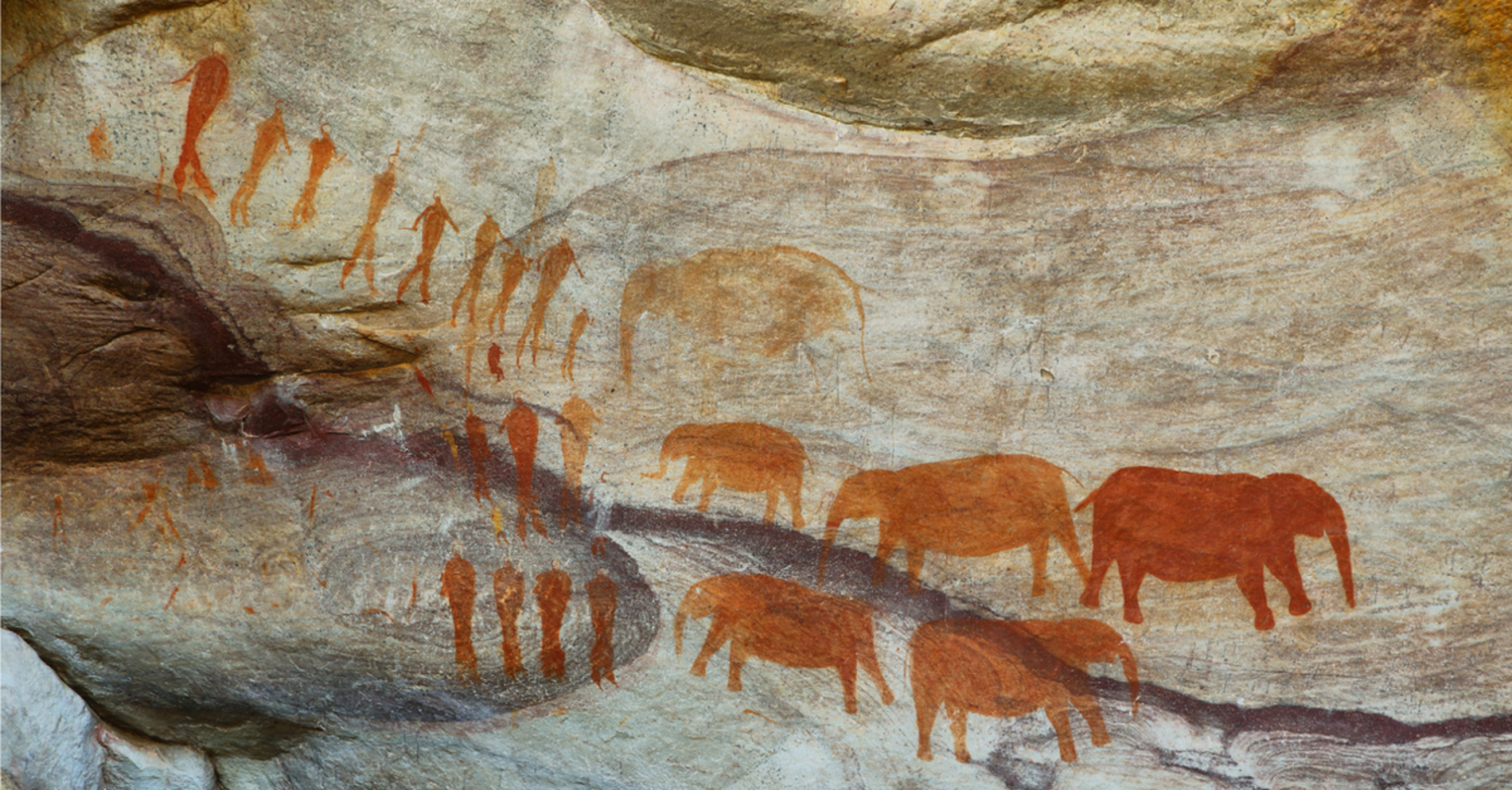South Africa often draws traverls' with it's incredible culture and wildlife; however the rich history of South Africa offers another excellent reason to visity this incredible Country. We hope to have the opportunity to share South Africa's storied history with you first hand on one of our South African tours.
Early History
Prehistory
The territory of what is now South Africa has great historical significance to the evolution of the human race. Modern humans have lived in the region for over one hundred thousand years. However, ancestors to the human race have lived in South Africa for over two, perhaps as many as three million years. Numerous archeological sites exist in South Africa where various bones and other remains have been found. Not much is known about these ancient ancestors of ours, but they have fascinated generations of archeologists. Furthermore, in 2002 the earliest example of an abstract work of art was found at the Blombus Cave, dated at roughly 70,000 years old.
Early Migrations
In more recent years, at least archeologically speaking, the San and Khoikhoi peoples settled the area. These settlers are the earliest known migrations and separations of genetic homo sapiens. The San and Khoikhoi are distinguished by occupation: the San were hunter-gatherers, while the Khoikhoi were pastoral herders. These groups left East Africa eighty to hundred thousand years ago, eventually settling in South Africa. Grouped together as Khoisan, these peoples lived in South Africa for thousands of years before Portuguese traders came. There are records of the Portuguese and the Khoisan trading metals for livestock during the seventeenth century.
Another great migration from prehistory is the migration of the Bantu people from northern and central Africa to Southern Africa. Bantu people encroached on the territory of the Khoikhoi people in the early centuries AD. Some of these people settled into the Highveld regions. Bantu people settling near Limpopo founded the Kingdom of Mapungubwe, the first indigenous kingdom in South Africa. The Mapungubwe became a vast, powerful kingdom in the region, trading with people as far away as Arabia, India, and China. There is evidence of linguistic assimilation of KhoiKhoi people with the Mapungubwe, but such contact has not been thoroughly researched.
Despite thriving in the Limpopo region for nearly four hundred years and trading on a global scale for nearly a century, climate change in the fourteenth century led to the collapse of the Mapungubwe civilization. Scholars believe that this lead to difficulty growing crops and that the people needed to leave the region to survive. They left behind palaces and other settlements. Interestingly, the remnants of the Kingdom of Mapungubwe are believed to have founded the Kingdom of Zimbabwe, which in turn founded the Kingdom of Mutapa.
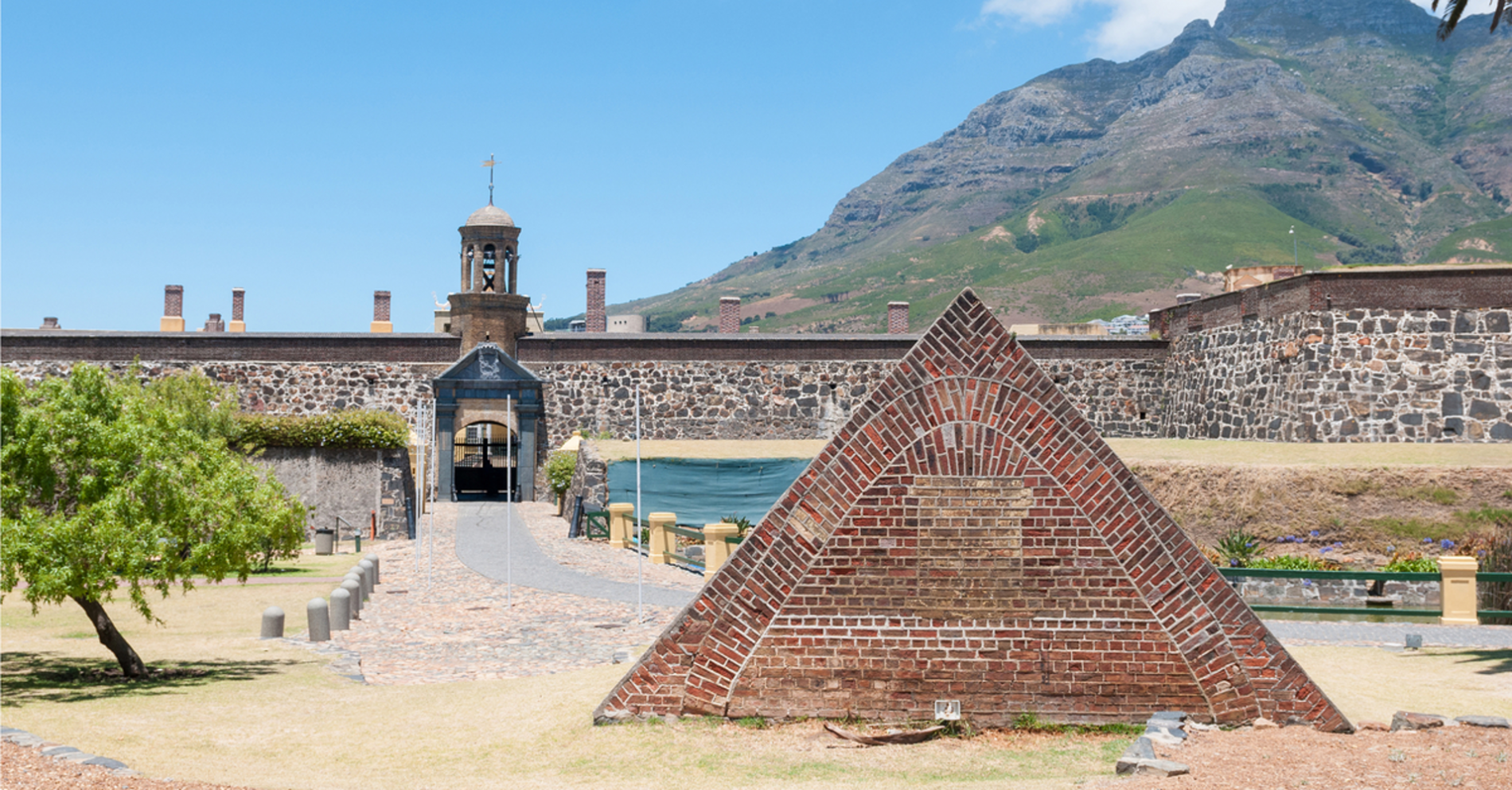
Dutch Colonial History
Portuguese Explorers and Settlement
Early Portuguese explorers first explored the Cape of Good Hope in 1488 as part of their effort to find trade routes to the Far East. Later explorers rounded the Cape almost a decade later in 1497. Despite these accomplishments, these early explorers were disinterested in colonizing South Africa, due in part to the fierce storms and lack of natural ports along the rocky coast. These Portuguese called the South African coast the “Cabo das Tormentas," meaning the Cape of Storms. Over the next 150 years it became common for sailors to stop at the southern tip of the Cape to rest scurvy-ridden crews and attempt trading with the Khoikhoi, but permanent settlements and colonization were deemed unprofitable by colonial powers.
Even the first permanent European settlement, founded in 1652 by Dutchman Jan van Riebeeck, was little more than a rest and resupply stop for passing sailors. Necessity drove this venture. The Dutch East India Company undertook such action only following numerous shipwrecks on the coast of South Africa and had no intention of colonizing the area. Cape Town was established near Table Bay.
The settlement grew slowly. Trading with the Khoikhoi often led to disputes and conflict, leading authorities to restrict contact with the pastoral civilization. Labor shortages made supplying the settlement difficult, as well as expanding it. To remedy this, sailors were released from their contracts and were allowed to establish farms and import slaves from Madagascar to work them. The reason for the importation of slaves was that Jan van Riebeeck considered it unwise to attempt to enslave the native Khoikhoi. Importing crops from Europe changed the natural landscape and economy significantly. It wasn’t long before the farmers, or the burghers as they came to be known, began to expand into Khoikhoi territory.
European-Indigenous Conflict
Naturally the Khoikhoi resisted Portuguese expansion. Unfortunately, despite outnumbering the Dutch settlers, superior technology and imported diseases from Europe decimated the Khoikhoi populations. Some Khoikhoi people chose to relocate to different regions, such as the Highveld. Survivors of these battles were coerced into indentured servitude to the Dutch landowners, arrangements which often differed little from slavery. As large groups of the Khoikhoi people left, the Dutch continued their expansion, often adopting nomadic pastoral lifestyles similar to the Khoikhoi themselves. These semi-nomadic Dutch eventually came to be known as the Boers.
The Khoisan, imported slaves, and Dutch often interbred and are the ancestors of South Africa’s Coloured populations today (multiracial ethnic groups). Even in colonial times many of these mixed-race people, generally with black mothers and white fathers, played significant roles in the development of the colonial establishment in South Africa, particularly the wine industry. Afrikaans, a derivative of Dutch, is the language that began to form in the eighteenth century as these groups commingled.
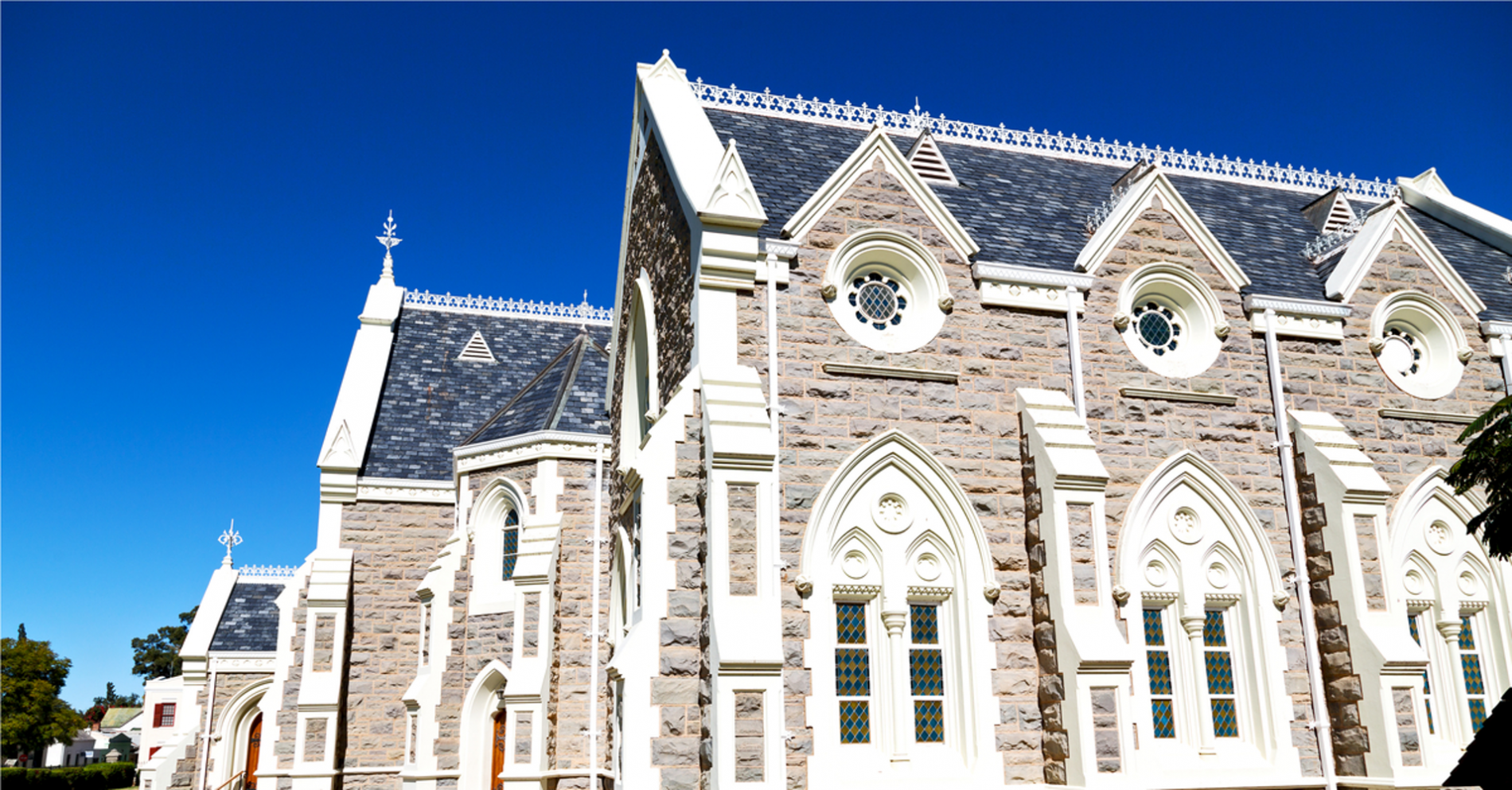
Caught Between Empires
Trading Empirial Hands
South Africa remained in Dutch hands for the better part of the eighteenth century. In response to the French Revolution, many countries attempted to invade France and seize the opportunity to gain power. However, factions among the Dutch sympathized with the French, which led to revolt and the French invaded the Dutch Republic to help their fellow revolutionaries. This led William the V of Orange the stadholder, or leader of the Dutch Republic, to flee the country and the new regime, the Patriot’s Party, aligned itself closely to revolutionary France. Meanwhile, William V took up residence in England and issued the Kew Letters, which included orders for colonial governors to transfer power of the colonies to the English for “safekeeping”.
Surprisingly, the British actually kept their promise and returned the colony to the Dutch in 1802 as part of a peace treaty with France. The peace was, however, short-lived. The Napoleonic Wars broke out a year later between France and England. Once Napoleon conquered the Netherlands and set up a proxy government, the Kingdom of Holland, the British promptly seized South Africa again and didn’t let go until it became a free country in the twentieth century.
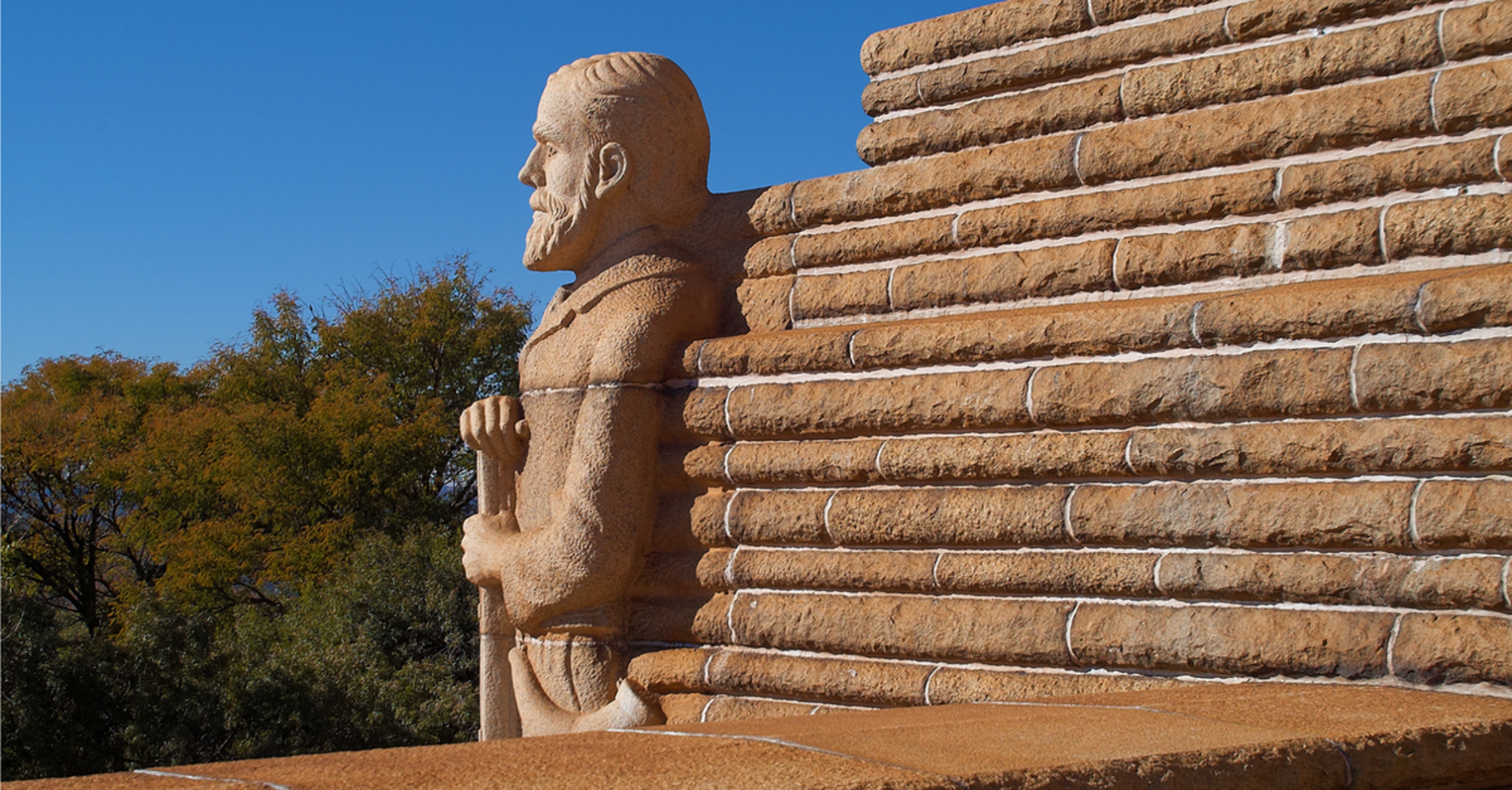
English Colonial History
Anglicization & Cultural Tension
Like the Dutch, the English at first did not see South Africa as anything more than a strategic port. Initially they let the Dutch colonists enjoy many of the same rights and privileges as they had before the English administration. However, they eventually tried to outlaw the use of the Dutch language, with intent of converting the Dutch population to English culture. The law only made the Dutch move to the fringes of English territory. The English also paid 5,000 of their citizens to relocate to their new dominion. These settlers helped Anglicize the region, though tensions were high between the former Dutch and the new English. The two European cultures clashed, as the English were more urbane and invested in politics, while the Dutch Boers were mostly rural and uneducated.
The British Empire's abolition of slavery in 1834 further deepened the divide between the Boers and the British. The Boers viewed abolition as a perversion of the natural, God-given order. The economics of the slave trade had obviously greatly benefited the Boers and abolition threatened ruin to many families financially. The British offered to pay the Boers for freeing their slaves, but the Boers believed their slaves were worth more than the one million pounds offered by the British government. Furthermore, the money could only be received in person in Britain, an impossible journey for many Boers to make.
However, it should not be believed that the British colonizers were making radical changes to the colonial system. The British had a deeply ingrained belief in racial superiority and made only modest reforms to protect former slaves. Furthermore, backlash to abolition led to “Masters and Servants Ordinances” which gave Boers new ways to exploit their former slaves.
Rise of the Zulu
The rise of the Zulu as a regional power had profound effects on the ongoing culture battle between the English and the Boers. The Zulu Kingdom originated from a minor tribe formed at the beginning of the eighteenth century. Shaka Zulu, warrior and illegitimate son of a king, rose to prominence in the early nineteenth century, forming the Zulu Kingdom in 1818. He instituted many reforms to centralize the Zulu State and won a showdown with the religious leaders, ensuring their subservience to his will. One of the reforms was integrating people from defeated tribes into his kingdom on the basis of equality. Harkening back to his status as an illegitimate son, promotions in the army and civil society were based on merit rather than familial connections, simultaneously ensuring a strong and loyal kingdom. Almost singlehandedly Shaka made the Zulu a force to be reckoned with throughout nineteenth century South Africa. Nevertheless, in enacting some of the reforms he created many enemies among his own people, particularly those who had benefited from the previous systems. His half-brother, Dingane, assassinated him and became King of the Zulus in 1828.
The Great Boer Trek
Meanwhile the Boers had had enough with the English. In 1835 a series of emigrations known as the Great Trek out of English territory began. These ultimately resulted in the founding of the Boer republics. Leaving colonial territory brought the Boer trekkers in conflict with a number indigenous civilizations and tribes, including the Zulu and their enemies. The Boers attempted negotiations with the Zulu to acquire land. The Boers’ demands for land undoubtedly contained poorly veiled threats to the Zulu if their demands were not met. Additionally the Zulu king could not permanently give the Boers land that rightfully belonged to the Zulu people.
In response to the threats, the Zulu massacred hundreds of Boers, many of whom were women and children. This resulted in a series of conflicts with the Zulu. The trekkers would undoubtedly have lost these battles if not for the increasing unpopularity of Dingane, the Zulu King. Mpande, one of Dingane’s half-brothers and leader of a large faction of the Zulu, allied himself with the Boer trekkers to make himself king. When the trekkers were victorious in 1839 they founded the Natalia Republic, which was allied with the Zulu kingdom.
British Economic Expansion & the Search for Boer Independence
However, the Boer victory, which they attributed to divine intervention, was short-lived and in 1843 the British annexed the Natalia Republic to make the Natal Colony. The Boers increasingly felt suffocated by the British on one side and the indigenous people on the other. In the meantime the British attempted to establish sugar plantations in Natal. Their efforts were curbed by uncooperative Boers and a Zulu population unwilling to do the intensive labor required on a sugar plantation. The British resorted to importing indentured Indians to work in the awful conditions of the sugar plantations. By 1910 an estimated 150,000 Indian workers had been imported to South Africa.
The Boers continued their searches for independence. In the latter half of the nineteenth century they founded the South African Republic (ZAR) and Orange Free State. Despite being extremely poor, lacking industry and subsisting on minimal agriculture, these states seemed to be on the path to self-sufficiency. The discovery of diamonds turned the Boer’s vision on its head. The English quickly annexed the republics and thousands of Europeans and Africans flooded into shantytowns, ignoring what the Boers thought of as the proper separation of whites and blacks. Furthermore the leaders of the Boer republics did not benefit from the discovery of diamonds, leading to further anger at British tyranny.
The British were not content annexing the territory of the Boers. The British had a vision of a united South Africa. Aberrations such as the Boer republics and the Zulu Kingdom would have to be brought under their control. Sir Henry Frere was sent to South Africa to put this plan into action as High Commissioner. In December of 1878 he presented Cetshwayo, King of the Zulu, with an ultimatum calculated to bring the two countries to war. If the Zulu did not respond by laying down their arms and accepting British rule of their land, the British would attack. Cetshwayo did his utmost to avoid the war but could not accept the terms. The Zulu fought valiantly to protect their sovereignty and won a few early victories, such as the Battle of Isandlwana. Inevitably, they were crushed, their land partitioned, and steps were taken to ensure that they could never again unite under a single king.
The Boer Wars
With the Zulu “threat” disposed of the British shortly returned their attention to the Boer republics in their goal to federate South Africa. The British did not count on the level of resistance the Boers were willing to put up. Tired of decades of British tyranny, and valuing their independence over industrialization, the Boers fought back in a series of conflicts known as the Boer Wars.
The First Boer War was a setback for the British and a triumphant victory for the Boers. Lasting barely a total of three months, the conflict barely merits the term ”war”. Each battle was relatively small. Despite having superior forces in training, number, and equipment, the British struggled to root out the more mobile and unconventional fighting force of the Boers. The British government, believed the cost of winning the war to be too high and ordered a peace. The final peace treaty resulted in a suzerainty: the British maintained control over diplomatic relations and the Boers accepted nominal British rule, while the Boers were free to govern themselves domestically.
Ironically, the discovery of gold in the Boer Republics dealt another blow to their continued quest for independence. More British subjects came to the country to pursue the gold rush, further pushing the Boers to the edges of the political sphere and limiting their ability to self-govern. In 1895 a miner with imperialist aspirations attempted to stage a coup over the South African Republic. Though acting independently, Paul Kruger, the Boer leader, suspected the miner had at least tacit approval from the Cape Colony.
The situation finally boiled over when the British demanded that the ZAR grant the 60,000 British subjects living within the country the right to vote. Kruger refused to enfranchise the British subjects and also demanded that the British withdraw all troops from the ZAR’s borders. Both sides, unwilling to give in to the other’s demands, declared war in 1899. The British won the war in 1900, despite early losses and a predominant opposition to the imperialist war on the home front, due to an overwhelming offensive into Boer territory where they outnumbered the Boers four to one.
Despite nominal defeat in the war, the Boers continued to resist British hegemony using guerrilla tactics for another two years. To put a stop to the war, the British forcibly relocated the civilian Boer population to concentration camps where the Boers died by the thousands due to disease. Some estimates to the deaths in the camps are as high as 26,000, mainly women and children. Emily Hobhouse, a British woman from England, campaigned to improve the conditions of the camps. Her advocacy on behalf of the Boers is partially what turned English public opinion against the war.
Under British Sovereignty
Eventually the Boers conceded to British terms. The Boers acknowledged British sovereignty, while the British committed themselves to rebuilding the regions they decimated with scorched earth tactics. With their victory in the war the British began the process of unification. Their goal was to create a country called the Union of South Africa, consolidating the Cape Colony and the four main Boer republics into one nation. The South Africa Act of 1909 realized the goal of the British Empire of a unified South Africa. The legislation made South Africa an independent dominion of the British Empire on par with Canada, Australia, and New Zealand; as such, it was ruled by the monarch’s representative the governor-general.
Unification brought harsh segregationist laws to the country. The black majority was denied the right to vote. Furthermore, the Natives’ Land Act of 1913 essentially legalized territorial segregation by making land reservations for black natives. Only 8% of land was available for black occupancy, while the other 92% was available for white occupancy. The Afrikaner and British population was around 20% of total population. Furthermore, black natives could only live outside the reservations if they could prove that they were employed. This act formed part of the basis for segregational policies that would come to be known as apartheid.
WWI Furthers Divides
Despite the unification, the people of South Africa remained split along racial and cultural lines and there were several attempts at insurrection and rebellion. World War I brought renewed chaos to the reason. Despite many Boers becoming respected members of the Imperial War Cabinet, factions of the former Boers, particularly those of German descent, refused to fight for the British and entered into open rebellion. The rebellion was swiftly crushed and its leaders imprisoned.
Support for the war remained divided along racial and cultural lines. British elements supported the war, as did Indians such as Mahatma Gandhi and some African natives who believed helping in the war would advance their fight for civil rights. Meanwhile Afrikaners, particularly those in rural areas, resented South African involvement in the war. Nearly 250,000 South Africans served in World War I in some capacity, though only about 30,000 of these saw active duty on the Western Front. Others protected French ports, fought against German colonies in southwest Africa, or contributed as laborers.
Post-WWII Angst
Many South Africans, particularly blacks and Indians, were embittered at the lack of progress in terms of racial segregation in postwar South Africa. At the outbreak of WWII there was debate about whether to join the war on the side of the Allies or the Axis Powers. The Prime Minister initially tried to remain neutral, but was deposed. Instead Jan Smuts, a veteran of World War I, became Prime Minister and declared war on the Axis Powers. Over 300,000 South Africans volunteered for military service and many served with distinctions in battles such as the Battles of Britain, Madagascar, and the campaign in North Africa. Smuts joined the British Imperial War Cabinet, a move that would later destroy his political career as postwar anti-British sentiments rose.
South Africa emerged from the war with greater prestige and recognition than previously. Prime Minister Smuts represented the country in various peace treaties, particularly in the creation of the United Nations where he urged the new international coalition to “have teeth” in order to prevent more world wars. Despite increased recognition on the world stage, anti-British sentiment at home led to Smuts defeat in the 1948 election.
The Rise of the National Party
Smuts' defeat saw the rise of the National Party, the group that cemented and formalized the laws that would come to be known as the apartheid. Laws were passed that legalized the forced removal of thousands of Africans to the Bantustans, or Bantu homelands. These ten territories served the purpose of consolidating ethnic groups. They were partially autonomous, though dependent on South Africa, often receiving more than 85% of their budgets from the South African government.
South African Independence
In 1961 South Africa received full independence from the British. Despite both domestic and foreign opposition to the apartheid regime, the government furthered the legislation. This resulted in the formation of several anti-apartheid organizations such as the African National Congress, the Azanian People's Organization, and the Pan-Africanist Congress. These groups fought the apartheid in a number of ways from guerrilla warfare to urban sabotage. They also fought each other as they vied for power domestically. Nelson Mandela, later president of South Africa, was a prominent figure in the ANC. Though initially committed to peaceful resistance, he was arrested in 1962 for conspiring to overthrow the government and in 1964 was sentenced to life in prison.
Apartheid became highly controversial throughout the latter half of the twentieth centuryl, resulting in international sanctions. In 1966 the United Nations voted the apartheid to be a crime against humanity. This resulted in an arms embargo against South Africa and the expulsion of the country from the UN. The United States circumvented the arms embargo by using Israel as a middle-man. The US would sell arms to Israel, who would in turn sell them to South Africa. Meanwhile, resistance groups such as the ANC and the South African Communist Party relied on weapons from the Soviet Union to resist the apartheid state.
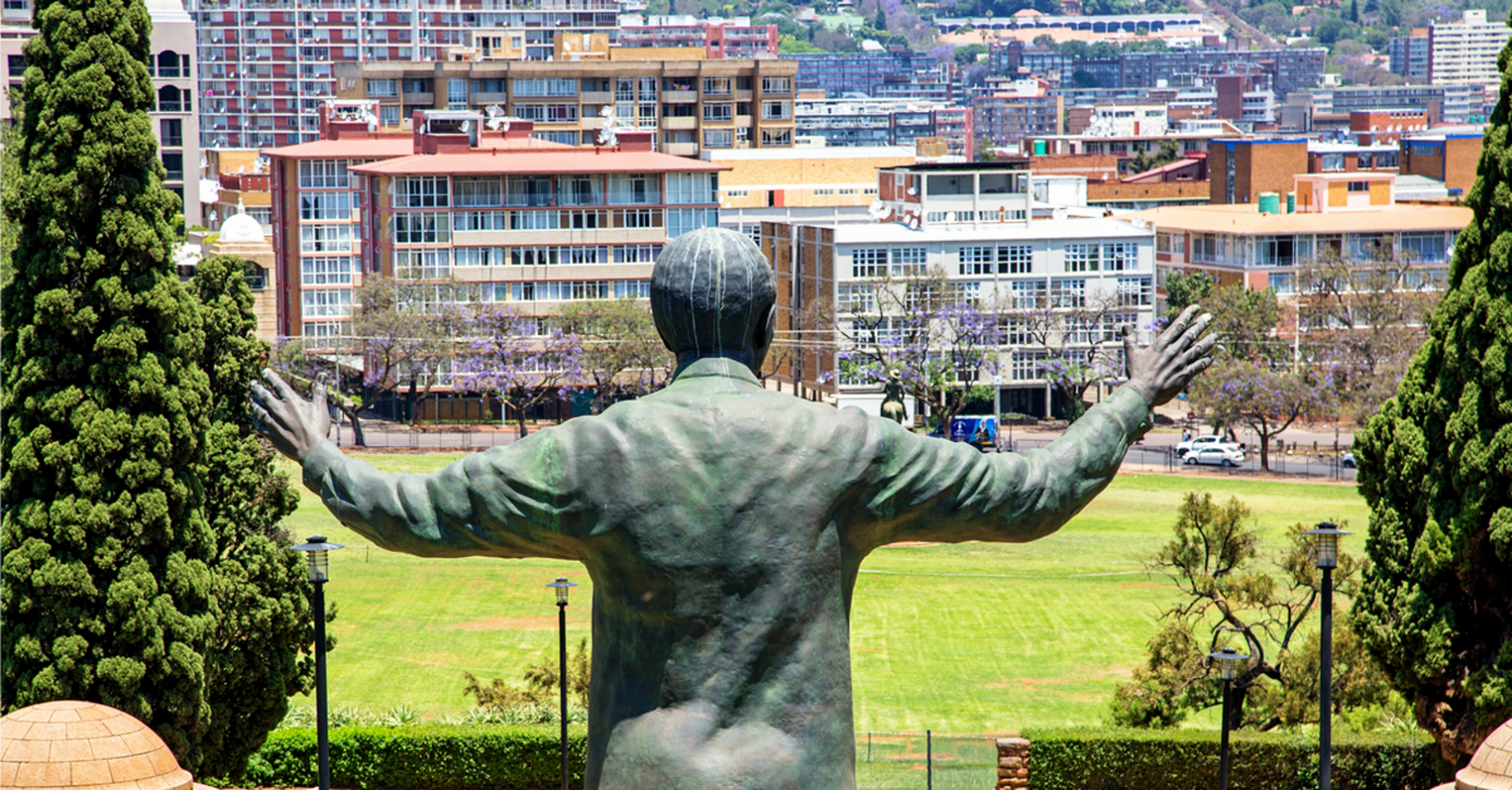
End of the Apartheid to Present
Resistance to Apartheid
The resistance to apartheid was initially peaceful, influenced by the pacifist movement of Mahatma Gandhi. Gandhi was particularly influential in South Africa because he began his career in civil resistance in South Africa, where he spent 21 years during the late-19th and early-20th centuries developing his political views and methods before returning to India. However, in 1960 the apartheid regime banned the formation of anti-apartheid parties. With organization made illegal, parties such as the African National Congress (ANC) were forced underground and turned to armed resistance. These illegal parties argued convincingly that their armed resistance to apartheid was just. Unfortunately, though the ANC had a policy of attacking only military and police targets, the Truth and Reconciliation Commission of 2003 found that the majority of casualties were civilian.
The rise of militant opposition to apartheid, though arguably necessary, made it unpopular with the conservative whites who were in charge of the country. Many saw the opposition to the regime as threats to Christian values, a view not helped by the Soviet financial support the ANC and other resistance groups received. The collapse of the Soviet Union left the ANC without the financial support they needed, but did not dampen the fervor with which they opposed the unjust, inhuman system of apartheid. Luckily, despite increased government crackdown on opposition groups and extra-judicial killings and assassinations throughout the 1980s, the international community was on the side of the ANC and its allies. By the end of the 80s, international sanctions, economic stagnation, and civil unrest strengthened the call for a representative democracy.
Mandela's "Talks About Talks"
Even though the leaders of the government were attempting to crackdown on opposition, intelligence officials realized the end of the apartheid was coming. Niel Barnard, leader of the National Intelligence Service (NIS) began meeting in secret with the imprisoned Nelson Mandela. He hoped to find enough common ground with Mandela to further a peaceful transition away from apartheid, preferring that to a costly, bloody civil war. As the two began to trust each other, Barnard had Mandela transferred to a more comfortable prison. The nature of these meetings has led them to be called the initial “talks about talks.”
South African president PW Botha began meeting with Mandela in secret as well. In the 90s Botha would speak out against apartheid reform and become the oppositional leader to Mandela. Though little progress was made in these secret meetings they laid the groundwork for future negotiations. In 1989 Botha had a stroke and was forced to resign the presidency. FW de Klerk was elected as his successor, a staunch conservative who, while Minister of Education, supported continued segregation of South African universities.
Nevertheless, de Klerk was suddenly spearheading the “verligte”--or enlightened forces of the ruling party. This movement had come to believe that apartheid was doomed to fail and favored starting negotiations while there was still time to get reasonable terms. However, many within the resistance were already of the opinion that the time for negotiations was past.
Progress & Protests
In 1990 Parliament de Klerk announced the end of the nearly 30 year ban on certain political organizations such as the ANC. He also announced the release of Nelson Mandela, who had spent the last 27 years in prison for his work in opposing the apartheid. 1990 saw much progress. In May the government granted immunity to South Africans living in exile and announced the release of political prisoners. August saw the suspension of armed resistance and the end of a years long state of emergency. Within two years plans for a Convention for a Democratic South Africa (CODESA) were in place.
CODESA I and II were ended by the Boipatong Massacre in June of 1992, where militant Zulu murdered 45 residents of Boipatong. Mandela accused de Klerk of complicity in the massacre. The ANC took to the streets with civil protests, resulting in the Bisho massacre in September of 1992 where 29 protesters were killed. Following the tragedy, the ANC and the National Party restarted negotiations to end apartheid.
They continued for the next six months when tragedy struck again with the assassination of Chris Hani, a leader within the ANC, on April of 1993. The assassination was at the hands of right-wing extremists, bringing the country to the brink of disaster. A year later, on April 27, 1994, South Africa held the first fully democratic elections with universal adult suffrage.
Over three days, nearly twenty-million votes were cast. The African National Congress, led by Mandela, won 62% of the vote. April 27 is now a South African national holiday: Freedom Day.
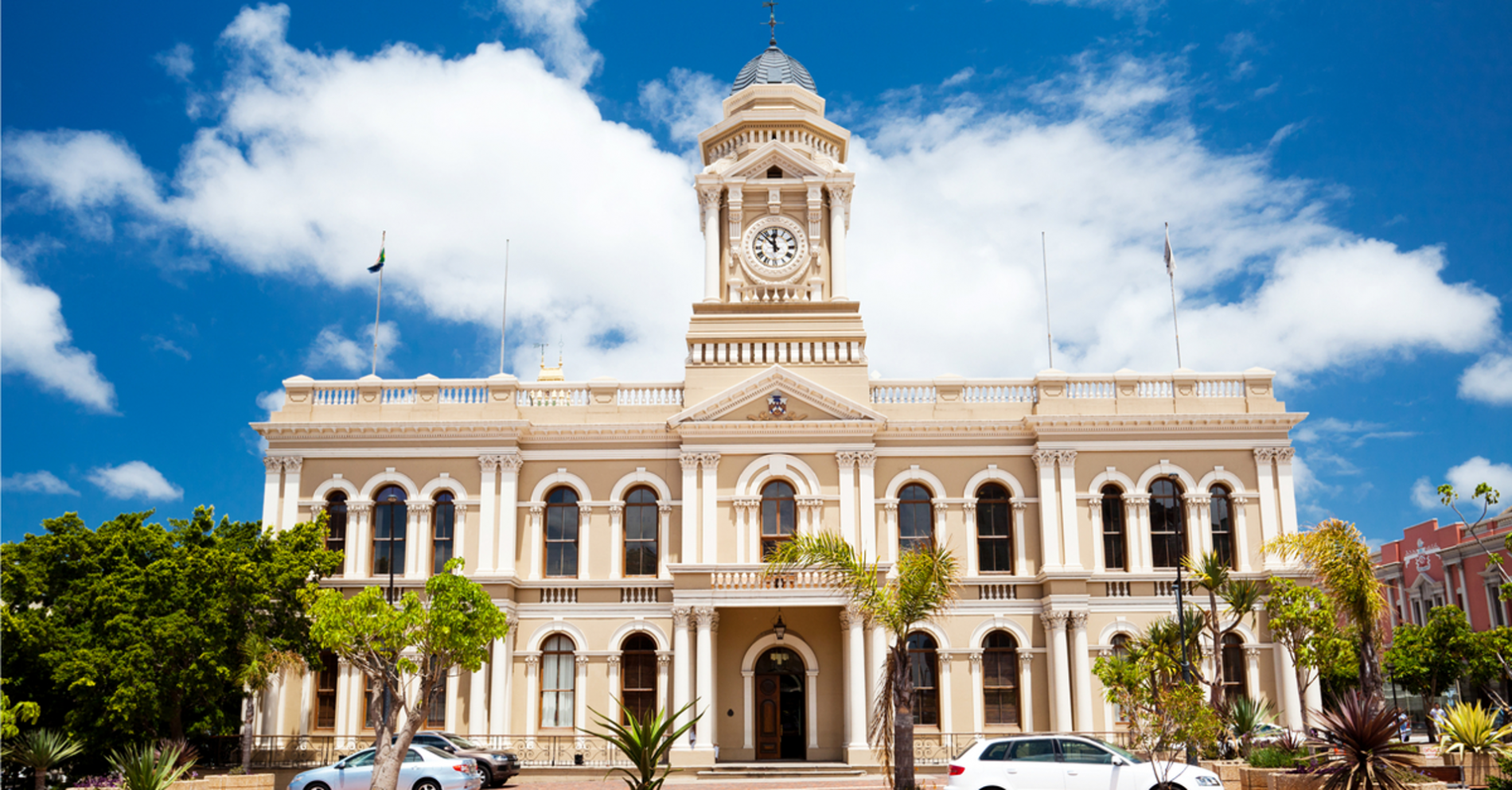
Post-Apartheid: Mandela to Present
Mandela as President
One of Mandela’s most pressing concerns as president was to combat the socioeconomic consequences of apartheid by alleviating poverty and extending social services. He also established the Truth and Reconciliation Commission (TRC) to expose the horrors of apartheid. The TRC gave victims of apartheid a platform to expose those who committed human rights abuses. Public trials were held for the most prominent cases. Far from being a propaganda machine for the new government though, the TRC also laid bare many of the atrocities committed by those who resisted apartheid. Those who confessed to their crimes could request amnesty. Those who did not confess were open to prosecution.
Mandela only served one term. Already in his 80s, he continued to serve South Africa as an activist and philanthropist. Though his successor, Mbeki, was much more controversial, Mandela continued to support Mbeki and the ANC throughout his two terms, from 1999 to 2008. Though far less popular, Mbeki proved himself shrewd and capable, especially when handling the opposition. His ability to effectively isolate his political enemies limited their power against him. He was also able to get various oppositional parties to support him on issues, co-opting them for a time.
Mbeki as President
However, over his two terms Mbeki fell from popularity. For one, he effectively denied the HIV crisis in South Africa and beyond. He gave precedence to scientists who critiqued the idea that HIV caused AIDS and refered to drugs meant to treat AIDS as poisonous, instituting policies that denied drugs to sick people. Instead Mbeki encouraged people to use herbal medicines, such as beetroot and lemon juice, to treat the disease. Similarly, he refused to condemn the situation in Zimbabwe. Under Mugabe, the president of Zimbabwe, state-sponsored violence against political opponents and opposition movements was rampant, coupled with the seizure of white-owned farms and sanctions against the press and judiciary. Mbeki’s refusal to condemn Mugabe and take a harder line on the dictator worried many of South Africa’s citizens.
In 2007 Mbeki began to lose popularity. Despite facing charges of corruption relating to a multi-billion dollar arms deal, Jacob Zuma, Mbeki’s former Deputy President, became president of the ANC--defeating Mbeki and positioning himself for a presidential race the following year. Shortly after, a high judge found that Zuma’s case was politically motivated by Mbeki and illegal, resulting in Mbeki’s resignation. Kgalema Motlanthe took over as a “caretaker president” until the elections the following year, which Jacob Zuma won as the ANC’s candidate. The ANC gained the majority at 65% of the vote in 2008, a slight decrease from the previous election.
Problems Facing Post-Apartheid South Africa
An increasing problem for the post-apartheid government has been the emigration of skilled white workers from the country. More than 800,000 white people left the country amid safety concerns and losing their privileged status in the new regime. Concerns over safety are not entirely unjustified, as South Africa has led the world in murder rates since the early 1990s. Other problems South Africa has continued to face are HIV and poverty. Though since the end of the Mbeki era the situation has improved, nearly 20% of the country is infected with HIV/AIDS. On top of this, 47% of the country lives in poverty. The slow pace of transformation, coupled with economic mismanagement and corruption, fuels the frustration and protests of the populace. The ANC rose to prominence on the back of a socialist agenda, but its establishment of neoliberal policies continues to cause unrest.


